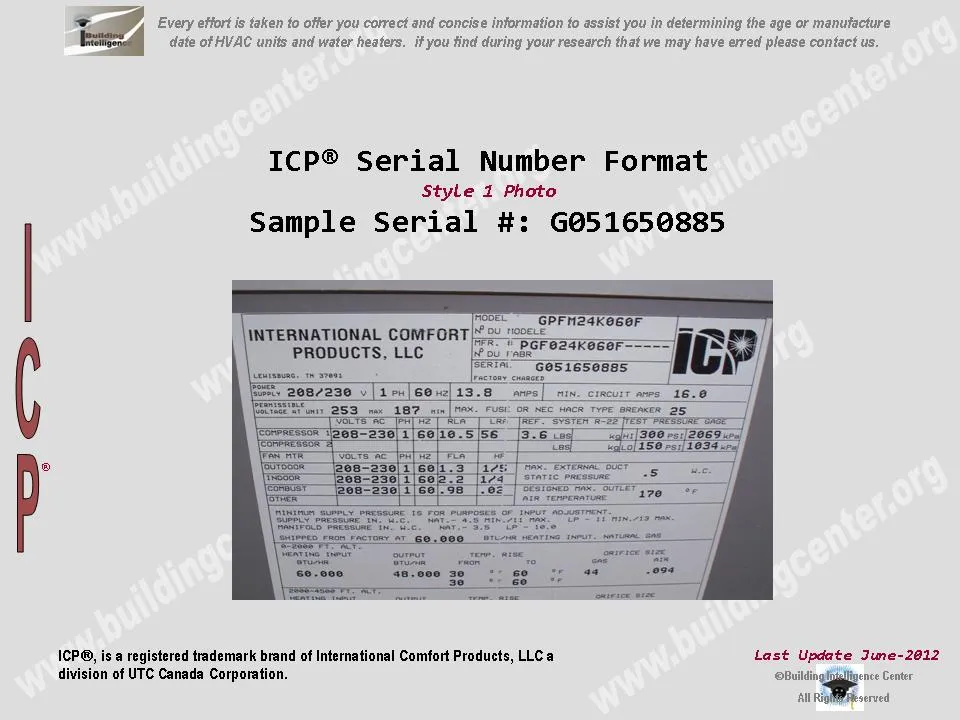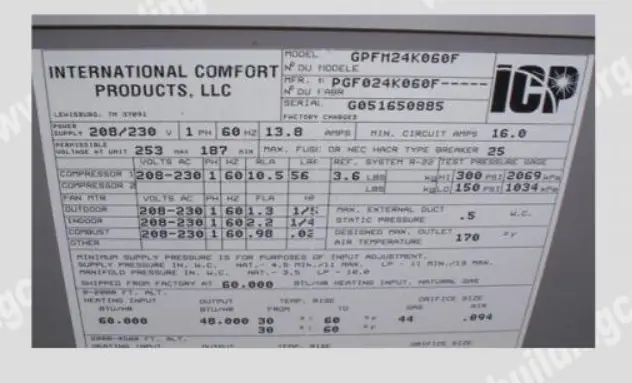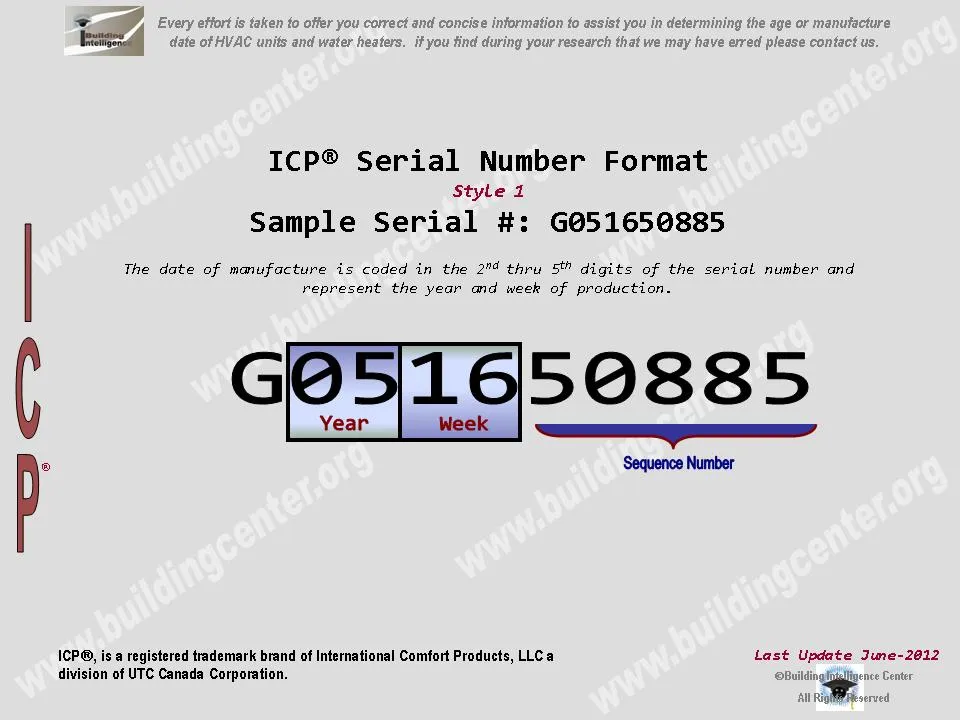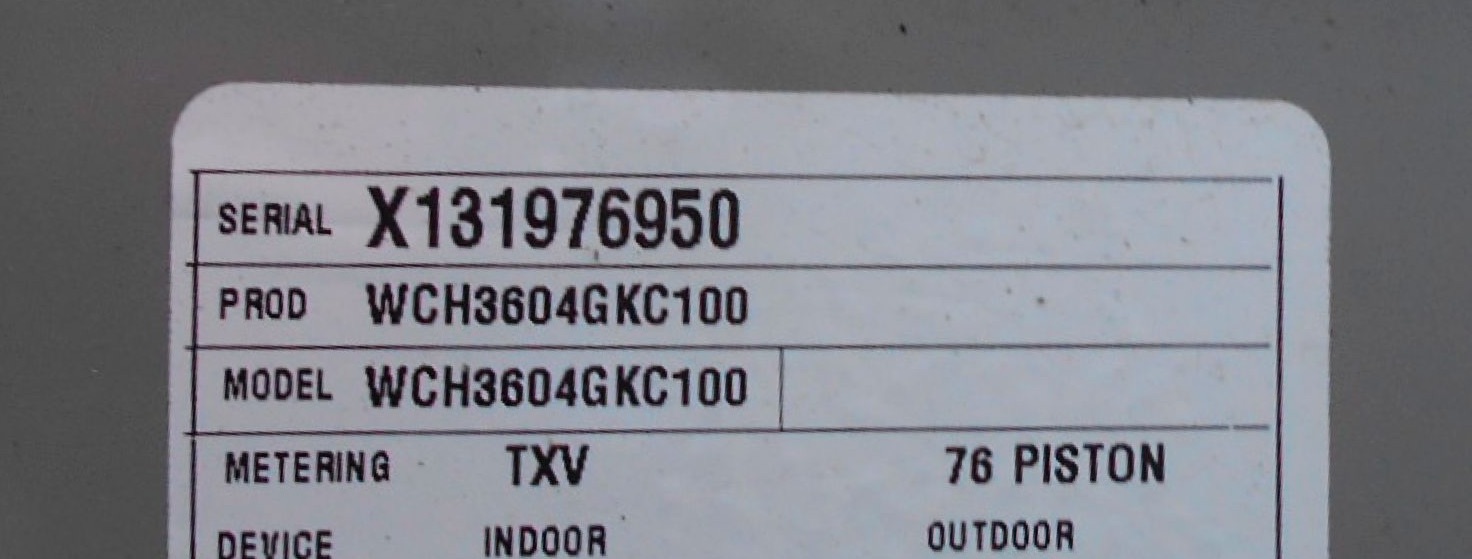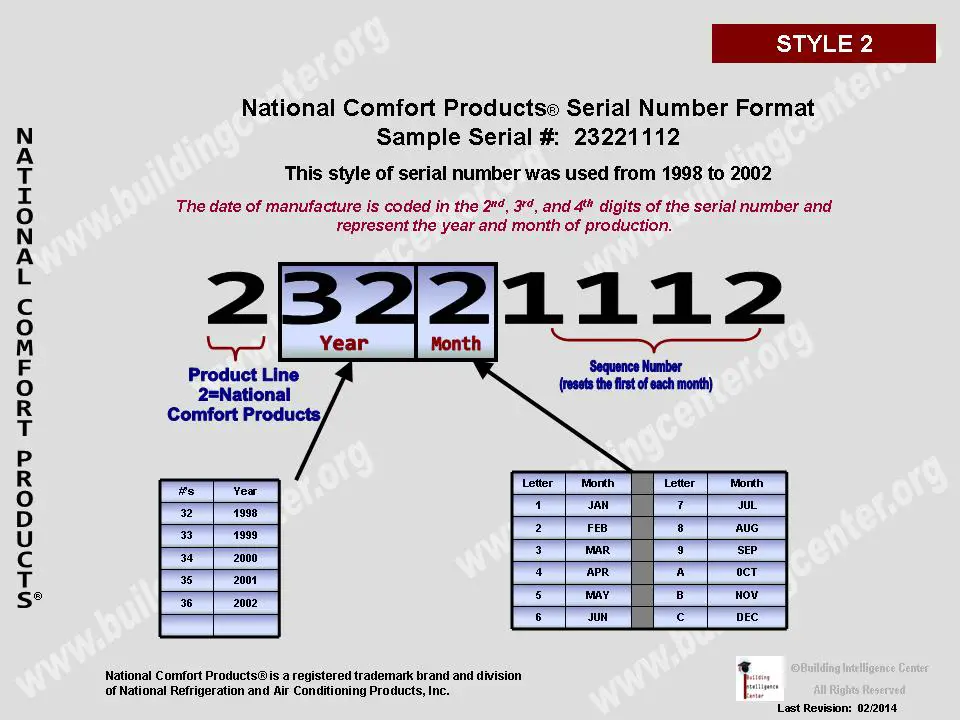International Comfort Products Model Number Lookup

In today's world, understanding the energy efficiency of your home or business's HVAC system is more crucial than ever. Not only does it impact your monthly energy bills, but it also plays a significant role in reducing your carbon footprint. A crucial first step in understanding your system's potential is identifying the exact model number, especially for systems manufactured by International Comfort Products (ICP). This article will guide you through the process of locating and utilizing your ICP model number to unlock valuable information about your system's efficiency and potential for upgrades.
Why is Knowing Your ICP Model Number Important?
Your ICP model number is more than just a random string of characters. It's the key to unlocking a wealth of information about your HVAC system, including:
- Energy Efficiency Ratings: Find out the SEER (Seasonal Energy Efficiency Ratio) for cooling units and AFUE (Annual Fuel Utilization Efficiency) for furnaces. Higher numbers mean better energy efficiency and lower operating costs.
- System Age: Determine the manufacturing date of your unit. Older systems are often less efficient and may be nearing the end of their lifespan.
- Component Compatibility: Ensure that replacement parts, such as filters, motors, and compressors, are compatible with your specific unit.
- Warranty Information: Access warranty details, including coverage periods and potential claims.
- Rebate Eligibility: Check if your system qualifies for energy efficiency rebates offered by local utilities or government programs like those promoted by Energy Star.
- Smart Home Integration: Discover if your system is compatible with smart thermostats and sensors, enabling enhanced control and energy savings.
Understanding these factors allows you to make informed decisions about your HVAC system, from routine maintenance to complete replacements.
Where to Find the ICP Model Number
Locating the model number is usually straightforward. Here’s where to look:
- Outdoor Unit (Air Conditioners and Heat Pumps): The model number is typically found on a metal nameplate or sticker attached to the exterior of the unit. Look on the side, front, or back panels.
- Indoor Unit (Furnaces and Air Handlers): For furnaces, check inside the access panel. You may need a screwdriver to remove the panel. Air handlers usually have the model number on a similar nameplate on the unit's exterior.
- Documentation: Check your original installation paperwork, user manuals, or warranty documents. The model number should be listed there.
The nameplate typically includes the model number, serial number, and other important information like voltage and amperage ratings. The model number is usually a combination of letters and numbers. For example, a furnace model number might look like "GCG060100MPA," while an air conditioner model number could be "N4A336AKA."
Pro Tip: Take a picture of the nameplate with your smartphone. This way, you'll always have the model number and other crucial information readily available, even if the physical label fades or becomes damaged.
Decoding Your ICP Model Number
While the specific format varies depending on the ICP brand (e.g., Comfortmaker, Heil, Tempstar, Arcoaire), here’s a general breakdown of what the different parts of the model number usually represent:
- First Few Characters: Often indicate the type of unit (e.g., "GCG" for gas furnace, "N4A" for air conditioner).
- Numbers: Usually denote the unit's capacity or size. For example, "060" in a furnace model might represent 60,000 BTUs (British Thermal Units) of heating output. In an air conditioner, "36" could indicate 36,000 BTUs of cooling capacity, which translates to 3 tons.
- Letters: Can indicate the efficiency level, features, and design specifications.
Keep in mind that decoding the model number can be complex. The best way to get accurate information is to consult the manufacturer's specifications or contact an HVAC professional.
Utilizing the Model Number for Energy Efficiency Assessment
Once you have your ICP model number, you can use it to assess your system's energy efficiency. Here's how:
- Manufacturer's Website: Visit the ICP website (or the website for your specific brand, such as Comfortmaker) and search for your model number. You should be able to find product specifications, including SEER and AFUE ratings.
- Energy Star Database: The Energy Star website has a product finder tool where you can search for certified HVAC systems. While not all ICP models are Energy Star certified, this tool can help you compare your system's efficiency to current standards.
- AHRI Directory: The Air Conditioning, Heating, and Refrigeration Institute (AHRI) maintains a directory of certified equipment. You can search for your model number in the AHRI directory to verify its performance ratings.
- HVAC Professional: Contact a qualified HVAC contractor. They can use your model number to assess your system's efficiency and recommend upgrades or improvements.
Example: Let’s say your air conditioner has a SEER rating of 10. Current Energy Star standards require a minimum SEER of 15 for most regions. This indicates that your system is significantly less efficient than newer models and could be costing you a substantial amount in energy bills.
The ROI of Upgrading to a More Efficient System
If your ICP system has a low SEER or AFUE rating, or if it's nearing the end of its lifespan (typically 15-20 years), upgrading to a more efficient model can provide a significant return on investment (ROI). Here's how:
- Lower Energy Bills: More efficient systems use less energy to provide the same level of heating or cooling, resulting in lower monthly bills. According to the U.S. Department of Energy, upgrading to an Energy Star-certified HVAC system can reduce energy consumption by 20-40%.
- Increased Home Value: Energy-efficient upgrades can increase your home's value and make it more attractive to potential buyers.
- Rebate and Tax Incentives: Many utilities and government programs offer rebates and tax credits for installing energy-efficient HVAC systems. These incentives can significantly reduce the upfront cost of upgrading.
- Improved Comfort: Newer systems often offer more consistent and precise temperature control, leading to improved comfort throughout your home.
- Reduced Maintenance Costs: Older systems are more prone to breakdowns and require more frequent maintenance. Upgrading to a newer system can reduce these costs.
To calculate the potential ROI of upgrading your HVAC system, consider the following factors:
- Current Energy Bills: Analyze your past energy bills to determine your average monthly or annual heating and cooling costs.
- New System Efficiency: Research the SEER or AFUE rating of the new system you're considering.
- Rebate and Tax Incentive Availability: Check for available rebates and tax credits in your area.
- Installation Costs: Obtain quotes from multiple HVAC contractors for installation costs.
- Estimated Lifespan: Consider the estimated lifespan of the new system.
By comparing the estimated savings to the cost of the new system, you can determine the payback period and overall ROI.
Smart HVAC Integration for Enhanced Efficiency
Integrating your ICP HVAC system with smart home technology can further enhance its energy efficiency and provide you with greater control over your home's climate.
- Smart Thermostats: Smart thermostats learn your heating and cooling preferences and automatically adjust the temperature to optimize energy savings. They can also be controlled remotely via a smartphone or tablet.
- Smart Sensors: Smart sensors monitor temperature and humidity levels in different rooms of your home. This information can be used to optimize heating and cooling based on occupancy and usage patterns.
- Remote Monitoring and Control: Remotely monitor and control your HVAC system from anywhere with an internet connection. This allows you to adjust the temperature, set schedules, and receive alerts if there are any issues with your system.
- Energy Usage Tracking: Track your energy consumption in real-time and identify areas where you can save energy.
Many ICP systems are compatible with popular smart home platforms like Google Nest, Amazon Alexa, and Apple HomeKit. Check your system's specifications to determine its compatibility.
Finding Qualified HVAC Contractors
When it comes to maintaining, repairing, or replacing your ICP HVAC system, it's essential to work with a qualified and experienced HVAC contractor. Here are some tips for finding the right contractor:
- Check for Licensing and Insurance: Ensure that the contractor is properly licensed and insured in your state.
- Read Reviews and Testimonials: Check online reviews and testimonials to get an idea of the contractor's reputation and quality of work.
- Ask for References: Ask the contractor for references from past clients.
- Get Multiple Quotes: Obtain quotes from multiple contractors to compare prices and services.
- Verify Certifications: Look for contractors who are certified by organizations like NATE (North American Technician Excellence).
- Ask About Energy Efficiency Expertise: Inquire about the contractor's experience with installing and servicing energy-efficient HVAC systems.
A qualified HVAC contractor can assess your system's performance, recommend energy-efficient upgrades, and ensure that your system is properly installed and maintained.
Conclusion
Knowing your ICP model number is a critical first step in understanding your HVAC system's energy efficiency and potential for upgrades. By using this information, you can make informed decisions about your system, lower your energy bills, and reduce your carbon footprint. Whether you're a homeowner looking to save money or a business aiming for sustainability, taking the time to identify and utilize your ICP model number is a smart investment.

